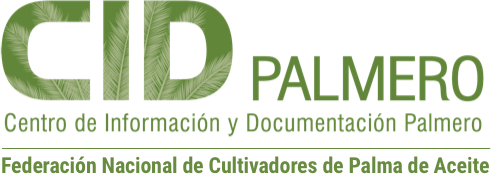Palm Oil Quality as a New Challenge for Palm Cultivation Worldwide

Disponible aquí Disponible aquí Disponible aquí Disponible aquí Disponible aquí Disponible aquí Disponible aquí Disponible aquí Disponible aquí Disponible aquí Disponible aquí Disponible aquí Disponible aquí Disponible aquí Disponible aquí Disponible aquí Disponible aquí Disponible aquí Disponible aquí Disponible aquí Disponible aquí Disponible aquí Disponible aquí Disponible aquí Disponible aquí Disponible aquí Disponible aquí Disponible aquí Disponible aquí Disponible aquí Disponible aquí Disponible aquí Disponible aquí Disponible aquí Disponible aquí Disponible aquí Disponible aquí Disponible aquí Disponible aquí Disponible aquí Disponible aquí Disponible aquí Disponible aquí Disponible aquí Disponible aquí Disponible aquí Disponible aquí Disponible aquí Disponible aquí Disponible aquí Disponible aquí
Author
Baena S., María A.
García Núñez, Jesús A.
González D., Alexis
Mondragón, Alexandra
Caballero B. , Kennyher
Estadisticas
Publicación:
Palmas; Vol. 42 Núm. 1 (2021); 65-80
2744-8266
0121-2923
Palmas; Vol. 42 Núm. 1 (2021); 65-80
2744-8266
0121-2923
Abstract
Producers of crude palm oil (CPO) worldwide have seen the need to adapt to the latest quality requirements of various markets and the regulatory requirements of the countries where this oil is marketed. Buyers are demanding more and new quality parameters when negotiating CPO, a raw material that is essential to produce different foods. Today, heavy metals, traces of aromatic and aliphatic hydrocarbons, chloropropanols, and chlorine and phosphorus compounds are most frequently monitored during the evaluation of the properties and characteristics of crude and refined palm oil for marketing. In addition to these quality parameters, other commonly used parameters, such as the free fatty acids (FFA) content, the deterioration o bleachability index (DOBI), and humidity and impurities, should also be considered. Currently, extensive work is being carried out in the search for good cultivation, processing and refining practices that guarantee the reduction of CPO contaminant compounds and pollutant precursors for refined oils. On the other hand, CPO has many minorcompounds with high nutritional potential and the capacity to generate high value-added elements that have not been adequately utilized. This article aims to present some of the characteristics that contribute nutritional value to palm oil and the new challenges the oil palm sector faces regarding the presence and reduction of pollutant precursors and pollutants formed during palm oil production. Likewise, it aims to highlight the practices that have been successful in mitigating these compounds. A nivel mundial, los productores de aceite de palma crudo (APC) se han visto en la necesidad de adaptarse a las más recientes exigencias de calidad de los distintos mercados, al igual que a los requisitos normativos pedidos por los países en donde se comercializa este tipo de aceite. Actualmente, más y nuevos parámetros de calidad conforman el grupo de requerimientos exigidos por los compradores durante las negociaciones del APC, materia prim a indispensable para la producción de distintos alimentos. Hoy por hoy, los metales pesados, trazas de hidrocarburos aromáticos y alifáticos, cloropropanoles y compuestos de cloro y fósforo son monitoreados con mayor frecuencia durante la evaluación de las propiedades y características del aceite de palma crudo y refinado para su comercialización. Adicional a estos parámetros de calidad, es necesario tener en cuenta los que comúnmente se utilizan como el contenido de ácidos grasos libres (AGL), el índice de deterioro de la blanqueabilidad (DOBI) y la humedad e impurezas. En la actualidad, se trabaja de manera exhaustiva en la búsqueda de buenas prácticas de cultivo, procesamiento y refinación que garanticen la reducción de compuestos contaminantes del APC y de los precursores de contaminantes para los aceites refinados. De otro lado, el APC tiene una gran cantidad de compuestos menores con alto potencial nutricional y la capacidadde generar elementos de alto valor agregado que no han sido debidamente utilizados. El objetivo del presente artículo es dar a conocer parte de las características que atribuyen valor nutricional al aceite de palma y los nuevos retos que enfrenta el sector palmero en lo referente a la presencia y disminución de precursores de contaminantes y de contaminantes formados durante la producción del aceite de palma, asimismo, pretende resaltar las prácticas que han dado buenos resultados en la mitigación de estos compuestos.
Producers of crude palm oil (CPO) worldwide have seen the need to adapt to the latest quality requirements of various markets and the regulatory requirements of the countries where this oil is marketed. Buyers are demanding more and new quality parameters when negotiating CPO, a raw material that is essential to produce different foods. Today, heavy metals, traces of aromatic and aliphatic hydrocarbons, chloropropanols, and chlorine and phosphorus compounds are most frequently monitored during the evaluation of the properties and characteristics of crude and refined palm oil for marketing. In addition to these quality parameters, other commonly used parameters, such as the free fatty acids (FFA) content, the deterioration o bleachability index (DOBI), and humidity and impurities, should also be considered. Currently, extensive work is being carried out in the search for good cultivation, processing and refining practices that guarantee the reduction of CPO contaminant compounds and pollutant precursors for refined oils. On the other hand, CPO has many minorcompounds with high nutritional potential and the capacity to generate high value-added elements that have not been adequately utilized. This article aims to present some of the characteristics that contribute nutritional value to palm oil and the new challenges the oil palm sector faces regarding the presence and reduction of pollutant precursors and pollutants formed during palm oil production. Likewise, it aims to highlight the practices that have been successful in mitigating these compounds.
Palabras clave:
Calidad del aceite de palma crudo
Composición del APC
Antioxidantes
Compuestos contaminantes
Calidad del aceite de palma crudo
Composición del APC
Antioxidantes
Compuestos contaminantes
Disponible aquí Disponible aquí Disponible aquí Disponible aquí Disponible aquí Disponible aquí Disponible aquí Disponible aquí Disponible aquí Disponible aquí Disponible aquí Disponible aquí Disponible aquí Disponible aquí Disponible aquí Disponible aquí Disponible aquí Disponible aquí Disponible aquí Disponible aquí Disponible aquí Disponible aquí Disponible aquí Disponible aquí Disponible aquí Disponible aquí Disponible aquí Disponible aquí Disponible aquí Disponible aquí Disponible aquí Disponible aquí Disponible aquí Disponible aquí Disponible aquí Disponible aquí Disponible aquí Disponible aquí Disponible aquí Disponible aquí Disponible aquí Disponible aquí Disponible aquí Disponible aquí Disponible aquí Disponible aquí Disponible aquí Disponible aquí Disponible aquí Disponible aquí Disponible aquí


